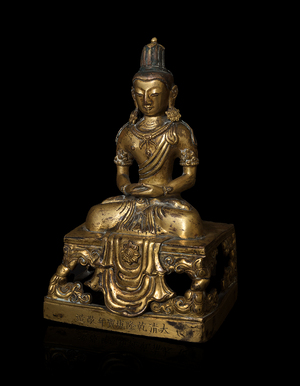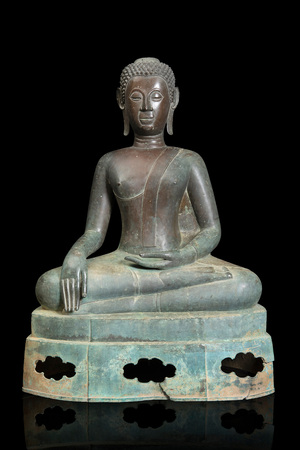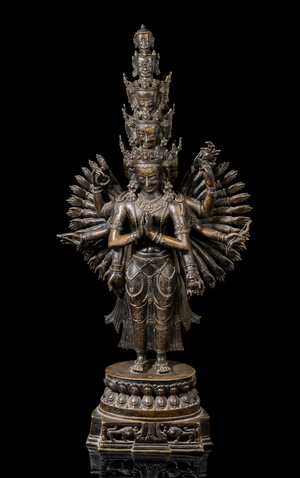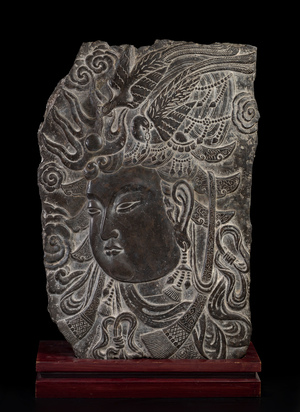The Bodhisattvas: the thousand faces of Buddha
The influence of Asian culture in our western society is becoming more and more notorious, integrating itself in its different layers with greater or lesser intensity. As far as the spiritual realm is concerned, the magnitude of its development, much of which is still unknown to us, with its heterogeneous character and great diversity of beliefs, makes the contrast with Western religious culture even more marked as it has been introduced in its different forms, especially through its artistic manifestations.
One of the consequences of this contrast is the difficulty we often have in correctly identifying the different deities that make up the Eastern religious pantheon. The great iconographic diversity that it offers requires us to refine our artistic vision to be able to perceive its wide range of details.
While the image of the Buddha as Siddhartha, the meditative monk with an affable gesture and humble appearance, is well engraved in our retina, the same is not true of the bodhisattvas. This name is given to a whole family of Buddhas who voluntarily renounce nirvana to return to earth and help humanity find enlightenment. The iconographic similarities between the two deities sometimes make it difficult to distinguish between them. Nevertheless, bodhisattvas possess a number of intrinsic traits, such as ostentatiousness and richness of appearance that link them to the earthly world and separate them from the iconographic canon with which we associate the Buddha.
Bodhisattvas are often grouped in many ways, adopting different appearances and associating with other divinities, which accentuates their already complex iconography. The most famous triad is composed of Avalokiteśvara, Manjusri and Vajrapani, the most revered bodhisattvas, representatives of Buddha’s compassion, wisdom and power.
Probably one of the most important is the figure of Avalokiteśvara “the one who looks down”, known as the one of infinite compassion. Its mission is to accompany the last of all beings to nirvana. Legend has it that in his desire to hear the cries of all the beings of the world, his master endowed him with ten heads to be able to hear in all directions and to be able to help them, he also endowed him with 1,000 arms. It is very common to see this divinity in its feminine form, as for example in China, where the trait of compassion is closely linked to women. It is popularized under the name Guanyin, adopting the appearance of a beautiful young woman bearing different attributes.
Manjusri, “the one with the sweet appearance” is the bodhisattva of wisdom, usually with a kind gesture, represented with a book and a sword that fights the ignorance and lies of the world where the faithful dwells. Completing this triad is Vajrapani “the one with the thunderbolt in his hand” in many cases seen as an image of power . He can be represented in serene or terrifying mode, but always with the vajra in his right hand. His representation as a warrior emphasizes a combative and fierce image, which under popular beliefs represents the struggle against negativity.
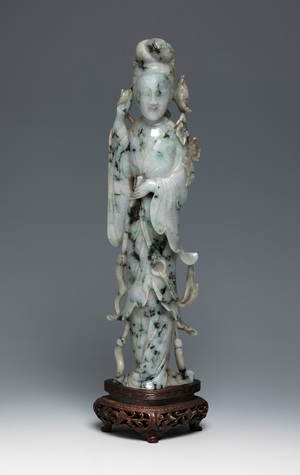
These three examples are but a small sample of the iconographic richness that reaches the West in the form of spectacular works of art, demonstrating without a doubt the complex and admirable coexistence of cultures and beliefs that take these deities as a common denominator. Some representations of these deities will be auctioned at the oriental art auction to be held on October 10 at Setdart. The collection will include a varied repertoire of pieces from Chinese, Tibetan and Japanese culture, among others, and will offer a privileged view of the evolution of oriental art over the centuries.

